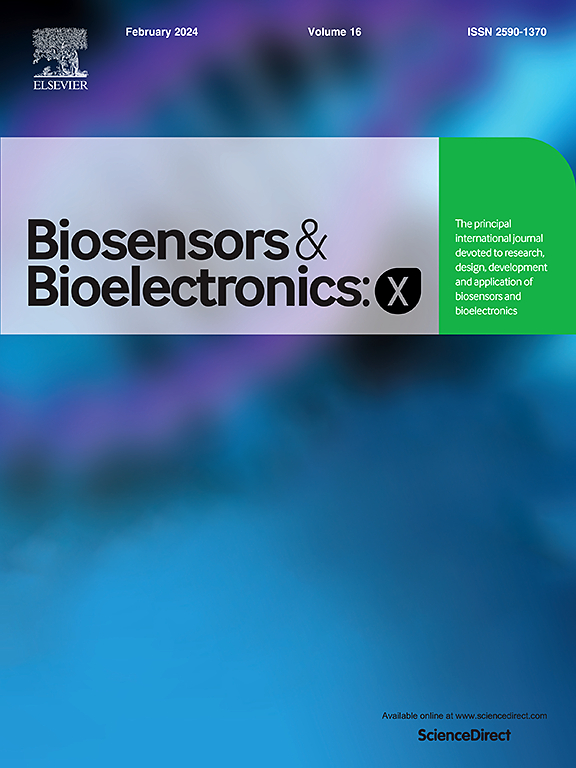Wearable sensor for real-time monitoring of oxidative stress in simulated exhaled breath
Abstract
High concentrations of H2O2, indicative of increased oxidative stress in the lung, are observed in the exhaled breath of individuals affected by different respiratory diseases. Therefore, measuring H2O2 in exhaled breath represents a promising and non-invasive approach for monitoring the onset and progression of these diseases. Herein, we have developed an innovative, inexpensive, and easy-to-use device for the measurement of H2O2 in exhaled breath. The device is based on a silver layer covered with an electrodeposited thin film of chitosan, that ensures the wettability of the sensor in a humid atmosphere. The s-ensor was calibrated in the aerosol phase using both phosphate buffer solution and cell culture medium. In the buffer, a sensitivity of 0.110 ± 0.0042 μA μM−1 cm−2 (RSD: 4%) and a limit of detection of 30 μM were calculated, while in the cell culture medium, a sensitivity of 0.098 ± 0.0022 μA μM−1 cm−2 (RSD 2%) and a limit of detection of 40 μM were obtained. High selectivity to different interfering species was also verified. The sensor was further tested versus an aerosol phase obtained by nebulizing the culture medium derived from human bronchial epithelial cells that had been exposed to pro-oxidant and antioxidant treatments. The results were comparable with those obtained using the conventional cytofluorimetric method. Finally, sensor was tested in real exhaled breath samples and even after undergoing physical deformations. Data herein presented support that in future applications this device can be integrated into face masks allowing for easy breath monitoring.

 求助内容:
求助内容: 应助结果提醒方式:
应助结果提醒方式:


